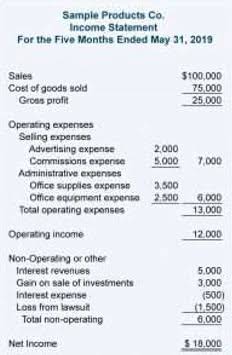
Credit memos provide a way for businesses to correct billing mistakes or account for returns after an invoice has already been issued. Unlike debit memo, which increases the amount owed, credit memo decreases the amount owed. Understanding credit memos and how they work is essential for any accounting team.
Credit Memo in Accounts Payable
Elevate your credit memo management and experience a more efficient and organized approach to handling financial transactions. In conclusion, credit memos are valuable tools in finance and accounting that facilitate accurate record-keeping, transparency, and customer satisfaction. For sellers, credit memos assist in accurately tracking accounts receivable, recognizing revenue correctly, and managing inventory levels. They also help in adhering to internal controls and regulatory standards. On the buyer’s side, credit memos simplify receiving refunds or adjustments for returned or damaged goods, contributing to better cash flow management and financial transparency. By definition, a credit memo – or they also call it credit memorandum – is a document used in financial transactions to acknowledge a reduction in the amount paid or owed by a customer to a business.

Differences between Credit Memo and Invoice

If a buyer fails to make timely payments or has an outstanding balance, you can create a debit memo to add late payment fees or penalty charges to the buyer’s account. This article will explain the details of credit and debit memos and how they help businesses maintain financial integrity. Whether you need to issue a credit or debit memo, you’ll know how to handle it professionally and efficiently. Additionally, terms and conditions related to payment and authorization details are included, ensuring compliance and accountability. A business issues a credit note to its customer in cases of returns, billing adjustments in favor of the customer.
- The shipping address, a list of items, prices, quantities, and the date of purchase are other significant pieces of data found on a credit memo.
- This document corrects invoice errors, addresses returned goods, applies discounts, and rectifies overcharges.
- It can affect you when applying for loans or credit extensions from your suppliers.
- By following the proper accounting procedures and recording the credit memo accurately, businesses can maintain accurate financial records and ensure transparency in their accounting practices.
- The credit memo is reviewed and authorized by the appropriate personnel within the seller’s organization to ensure accuracy and compliance with company policies.
Invoice Disputes: What They Are, How to Handle & Prevention Tips
- Credit memos provide a transparent mechanism for correcting discrepancies, reducing outstanding amounts, and fostering trust between businesses and customers.
- This might be to fix and error in the original invoice or to reflect post-sales negotiations.
- The application of a credit memo should be agreed upon by both the buyer and seller.
- In order to explain a debit memo sample, let us discuss a situation where a company provides construction services to a builder, and the remuneration is fixed per the contract.
- Another benefit of Automating is it ensures a proper application of credit memos.
- It can streamline operations, reduce unforeseen errors, and simplify the creation of debit and credit memos.
Another benefit of Automating is it ensures a proper application of credit memos. Do not credit memo meaning limit yourself to credit memos, explore our free invoice template and estimate template galleries as well. This entry reflects the reduction in your receivables and your sales revenue. Name and address, a list of items, prices, quantities, and the date of purchase are other significant pieces of data found on a credit memo. That includes the original invoice, proof of the issue (e.g., photos of damaged goods), and any other relevant information to support their claim. Credit memos are sometimes issued as a form of compensation for inconveniences experienced by customers.
Credit Note Double Entry Accounting Journal
Credit memos, on the other hand, are often used to issue refunds for returned merchandise. While both types of memos can be used to initiate payment, businesses should be aware of the difference so that they can properly record the transaction in their books. Businesses should regularly review their outstanding credit memos to ensure they are applied appropriately and in a timely manner. They should also take steps to minimize the number of credit memos issued, as it negatively impacts their cash flow and profitability (and sometimes speaks to an issue with their products or services). On the seller’s side, this is done by updating their accounts receivable and sales records with a journal entry unearned revenue to reflect the credit issuance. For the buyer, this is either through their account management tab or by keeping the credit memo on file for reference.

Treasury Management
- In this case, a credit memo will need to be issued to reflect that contractual rebate.
- A bank debit memo is a document through which the business can charge its customers for any changes made by the customer other than that of a predefined contract or work order without issuing a new invoice.
- With a clear understanding of the purpose of credit memos, let’s move on to the next section to explore the various components of a credit memo in detail.
- Issuing a debit memo is a business practice that ensures transparent communication and elucidates why additional charges are necessary, fostering clarity and trust in client relationships.
- In business-to-business transactions, a company issues a credit note to the buyer to amend an incorrect invoice, acknowledge the return of goods, or adjust the prices post-purchase.
- When a customer returns goods or cancels a service for which they were already billed, the supplier should send them a credit memo instead of lowering their total balance due.
- However, there is a need to realize that memorandums should still be maintained since they might be used during the company’s audit process.
The terms of the transaction should also be on the credit memo, such as net 30 but the customer is rewarded by paying within 15 days or less. A credit memo reduces the amount a customer owes, while a debit memo increases the amount owed. If the buyer submits payment within this promotional period, the seller could then issue a credit memo worth 3% of the transaction (in this case, $30). If the seller provided a credit memo rather than a refund, that credit amount would likely be applied to a future purchase. Here, the buyer’s accounts receivable account is credited and the sales returns account is debited when the buyer returns the goods.

Mismatch in the credit memo and invoice details
Or when there is an intimation from the customer’s end about not wanting to continue services. Make sure you apply Medical Billing Process for credits as the buyer makes another purchase or demands a refund. Adding entries in your books of accounts will help you know your right sales and revenue. Contractor A sold goods or services at $500 to company B, which actually costs $300. When found by Company A, they issued a credit memo stating the reason as overstatement. For example, on June 7, the company ABC issues a $1,000 credit memo to one of its customers for the goods that are returned due to the damage.
